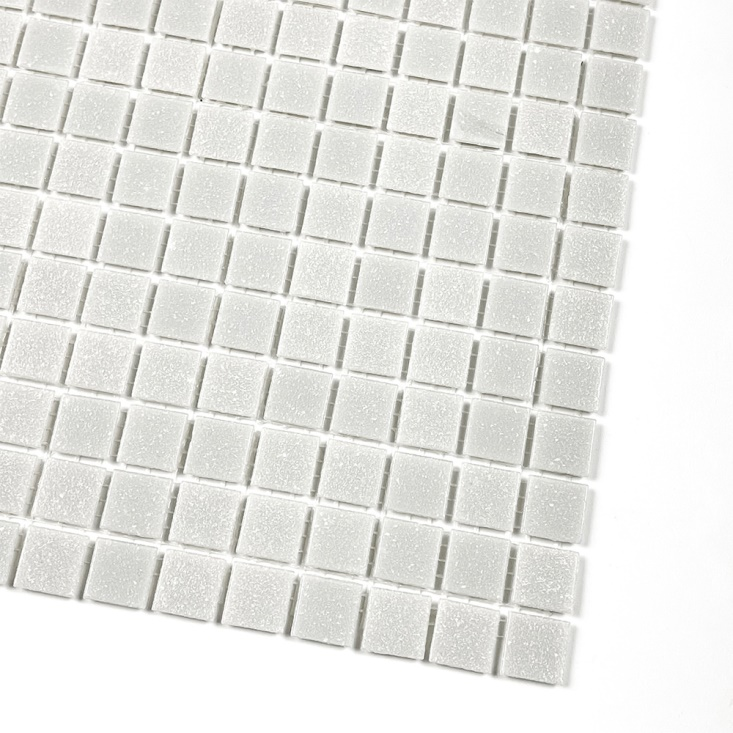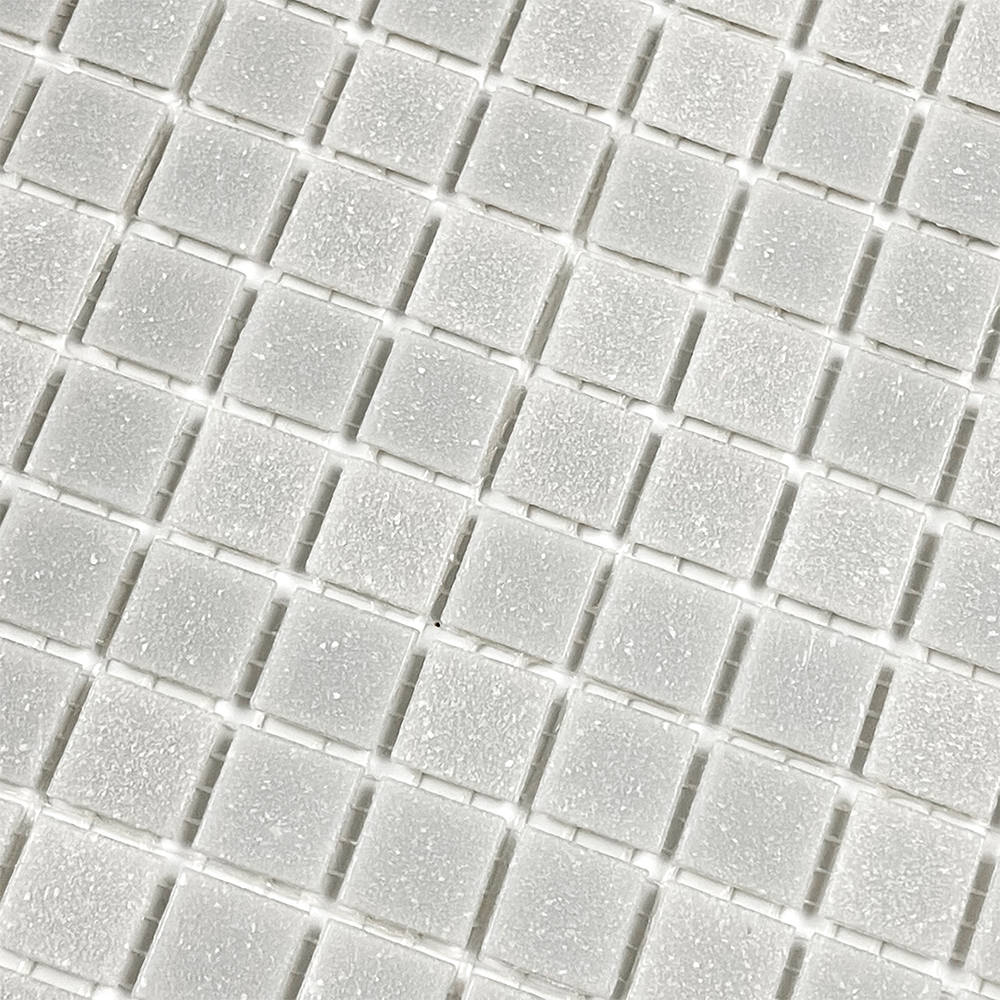Super Easy Ways to buy Wholesale Glass Mosaic Tile
2022.04.29 / By hqt

Once you've got the hang of it - when laying tiles - that's a great thing: you can just tile from the laundry room through the bathroom to the kitchen and finally into the living room. Find out about the wholesale glass mosaic tile special floor covering and find out which tile is right for you!
Glass Mosaic Tiles
Abrasion group, slip resistance, sorting, frost resistance, fire color - your head is spinning. You actually only wanted to buy a tile! Don't worry; it's not as complicated as it seems at first glance. Gaudi tile quickly explains the most important points to do with tiles.
A wholesale glass mosaic tile installation made from mosaic tiles offers a great way to add visual interest to a space. Whether on floors, walls, countertops or backsplashes - and whether made from traditional ceramic tile, porcelain or glass tile - mosaics create an intricate design effect that brings a luxurious look to any space.
Historically, mosaics were first carefully applied as individual tiny tiles to create a unified large surface with intricate designs.
However, modern Wholesale glass mosaic tile consist of practical panels with pre-assembled tiles that are remarkably easy to install. Using very small tiles or tiles with geometric shapes, mosaic panels offer advantages over working with individual ceramic or porcelain tiles.
What are mosaic tiles?
Modern mosaic tile is a product in which smaller squares of ceramic tile - generally 2 inches square or smaller - are bonded to mesh of fiberglass. The tiles are spaced on the slabs so the gaps between the tiles are just the right width for joint seams.

Wholesale glass mosaic tile panels are usually made up of small square tiles, but some mosaics are made up of panels of small rectangular tiles or other geometric shapes. You can even mix shapes within the same panel. There are also narrow slabs of mosaic tile used for borders and other accent applications.
This makes installing mosaic tiles much quicker than using individual small tiles.
Techniques for laying mosaic tiles
Wholesale glass mosaic tile panels can consist of tiles of the same color or use tiles of different colors and shapes for design effects. Most mosaic panels are traditional ceramic tiles, but there are also mosaics that use porcelain tiles, glass tiles, and natural stone or even unglazed terracotta tiles.
The techniques for laying mosaic tiles are almost identical to those for standard ceramic tiles, but cutting can sometimes be easier as applying partial panels can be as simple as cutting the fiberglass backing to create custom shaped panels.
Instructions Prepare surface
As with wholesale glass mosaic tile installation, the surface for mosaic tiles must be perfectly flat and smooth. In modern tile work, the backing is generally cement board over a plywood backing or applied directly against wall studs.
Mosaic tiles can be laid directly onto plywood or wallboard in non-wet locations, but cement board provides the best support and is the preferred choice for professionals.
Note:
When installing tile over plywood or drywall, use a latex adhesive instead of a thin mortar-based adhesive.
2nd instruction for prepare surface for glass mosaic tiles
Begin by installing full cement panels, and then cut the pieces to fit the remaining spaces. Cement board is best cut by scoring it with a sharp utility knife passed through a square and then snapping along the score lines. You can buy from Wholesale glass mosaic Tile Company on reasonable prices.
Use cement board screws to fasten the panels to the studs with the rough side of the panel facing out. Leave about 1/8-inch space between panels.
Next, cover the seams between the cement boards with 2 inch wide fiberglass cement board tape and cover the tape with a thin layer of light weight adhesive applied with a tape knife.
Plan the Tile Layout
As with any tiling job, a good mosaic tile installation requires a well-planned layout to ensure the grout seams run perfectly square. Draw intersecting vertical layout lines bisecting the surface from top to bottom and left to right.
Most professionals begin installation by laying all full sheets of wholesale glass mosaic tile in the center of the surface first, then trimming around the edges and around obstructions as necessary to cut anything.
Attach the first tile sheet
Starting in the center where the layout lines intersect, use a notched trowel to apply a coat of light adhesive to one of the layout quadrants. Work in sections about 2 to 3 feet square. Your wholesale glass mosaic tile and runny product will indicate what size notched trowel to use.
Some trowels use V-shaped notches while others have square notches. Be careful not to apply too much glue. You should be able to see the cement board at the bottom of the grooves.
Place the first tile sheet in the corner of the first quadrant and gently adjust it with your hands to ensure it lines up perfectly with the layout lines. Press firmly to embed the tile into the thin set. Hold them for a few seconds, and watch for slippage as you release hand pressure on the tile.
Fill in the first quadrant
Install adjacent mosaic panels in the first quadrant in the same manner. When doing this, use tile spacers to ensure that the spaces between the sheets exactly match the gaps between the wholesale glass mosaic tiles within the sheets.
Mosaic sheets have the small tiles staggered so the sheets interlock Make sure the grout seams remain even throughout the tile field.
How can we Set tiles?
Wholesale glass mosaic tile don't behave quite like single large tiles; they may ripple or ripple on the surface. To prevent this, after laying every few slabs, "set" the tiles with a small piece of plywood approx. 20 cm² and a rubber mallet, with which the mosaic panel can be tapped into the thin layer. This will flatten the tile area and give a nice smooth surface.
Pay particular attention to the seams between panels to ensure there is no lip page where one row of tiles is higher than the adjacent row, or slippage where the gaps between sheets are wider than the joint gaps within sheets.
Cut the tile sheets to fit
As you approach the edges of the tile area, you will likely need to trim the tile sheets. In some cases simply cutting the fiberglass mesh will create a partial sheet that is just the right size for your needs, but in other situations you may need to trim the individual edge tiles to fit exactly.
Avoid this if you can. You may be able to use ceiling tiles or other accents or baseboards to cover the gaps at the edge of a layout using a sharp utility knife, cut the stitches along the grout seams along the grout lines.
You can buy wholesale glass mosaic tile at our company without any hassle at a reasonable price.

